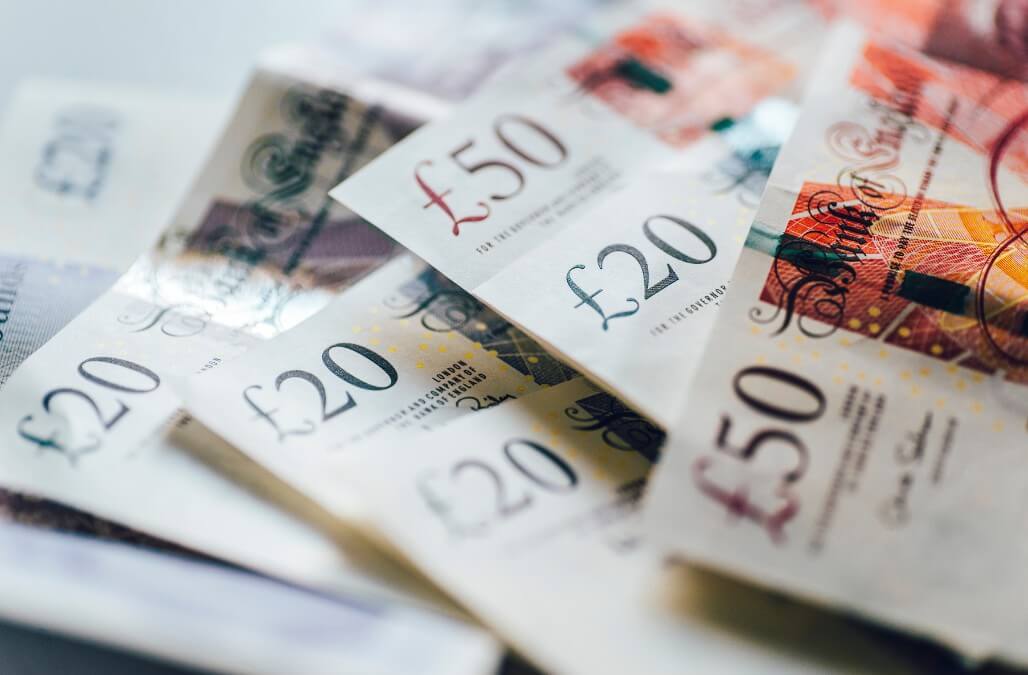The British Pound faced a challenging day, worsened by Bank of England Governor Andrew Bailey’s assertion that the conclusion of the interest rate hike phase was imminent. During his appearance before members of Parliament, Bailey emphasized that the Bank of England was now much nearer to the top of the cycle, indicating his belief that the peak in interest rates was approaching.
British Pound faces difficulties
Bailey’s statement reinforces market expectations that the anticipated 25 basis point interest rate increase in September could potentially mark the culmination of the current rate-hiking phase. The Pound was already facing difficulties before Bailey’s appearance before Parliament’s Treasury Select Committee, and his remarks triggered a renewed wave of selling.
The Pound to Euro exchange rate saw a 0.45% decline, settling at 1.1665. Simultaneously, the Pound to dollar exchange rate dropped by half a percent, testing the crucial 1.25 threshold, suggesting a continuation of its recent weakening trend.
Bailey expressed his anticipation of a substantial decline in inflation from this point onward, stating that the fall in inflation will continue and thinks it will be quite marked by the end of this year. Reflecting on a time when inflation surpassed 10%, he remarked that it was clear that rates needed to rise going forward, and the question was how much. However, he emphasized to lawmakers that “we’re not in that place anymore.”
Initially, the market expected 50 basis points in interest rate hikes by the end of the year, as Bailey and his Monetary Policy Colleagues indicated. Yet, his recent comments have raised doubts about the likelihood of a November rate increase following the one in September, which market participants had widely anticipated. The Pound’s decline is indicative of these diminishing expectations.
Despite this, the UK currently boasts the highest headline inflation rate among developed nations, and the Bank of England has signaled an intention to maintain interest rates at elevated levels for an extended period.
In response, Bailey and the MPC will be cautious about any substantial downward adjustment in interest rate projections, especially if the market starts anticipating rate cuts. That means the policy decision in September and the guidance provided may not necessarily lean towards a ‘dovish’ stance, contrary to what Pound sellers might anticipate.
Andrew Goodwin, Chief UK Economist at Oxford Economics, believes persistent inflation will postpone the first rate cut until the summer of 2024, months later than the Fed and ECB. High wage growth implies that the Bank of England will likely maintain a restrictive monetary policy.
Pound’s outlook shows diminished optimism
The Bank will also be monitoring the Pound’s depreciation against the dollar. This decline exacerbates the impact of rising fuel prices for both motorists and businesses, especially when oil prices are on the upswing, which in turn contributes to inflationary pressures.
Barclays Bank recently revised its outlook on the Pound sterling, expressing a diminished level of optimism, particularly in comparison to the euro, the dollar, and the Swiss franc. This shift from one of the UK’s primary lenders and investment banks after the Northern Hemisphere’s August holiday season implies that the sterling’s robust performance in 2023 may be waning.
According to Barclays Bank analyst Themistocles Viotakis, consumer demand appears to be tapering off, and there are indications that the labor market could be slowing down. He stated they have become less optimistic about the sterling Pound. Viotakis further noted that while steady wage growth and inflation indicate significant support for a longer time, there is now less room for further outperformance against the euro or the US dollar.
At the beginning of September, the Pound sterling was among the top-performing major currencies in the G10 foreign exchange market, closely vying with the Swiss franc for the leading position. This trend held for the rest of 2023, confirming the bullish stance taken by Barclays analysts over the past months.
However, Barclays’ projections do not foresee a significant decline in the value of the Pound. They anticipate the euro-to-pound exchange rate to be at 0.86 by the end of 2023 and 0.87 by the end of the first quarter 2024. This stability is expected to continue until the close of the third quarter in 2024, resulting in a consistent exchange rate for the Pound against the euro at 1.1630 and 1.15.





